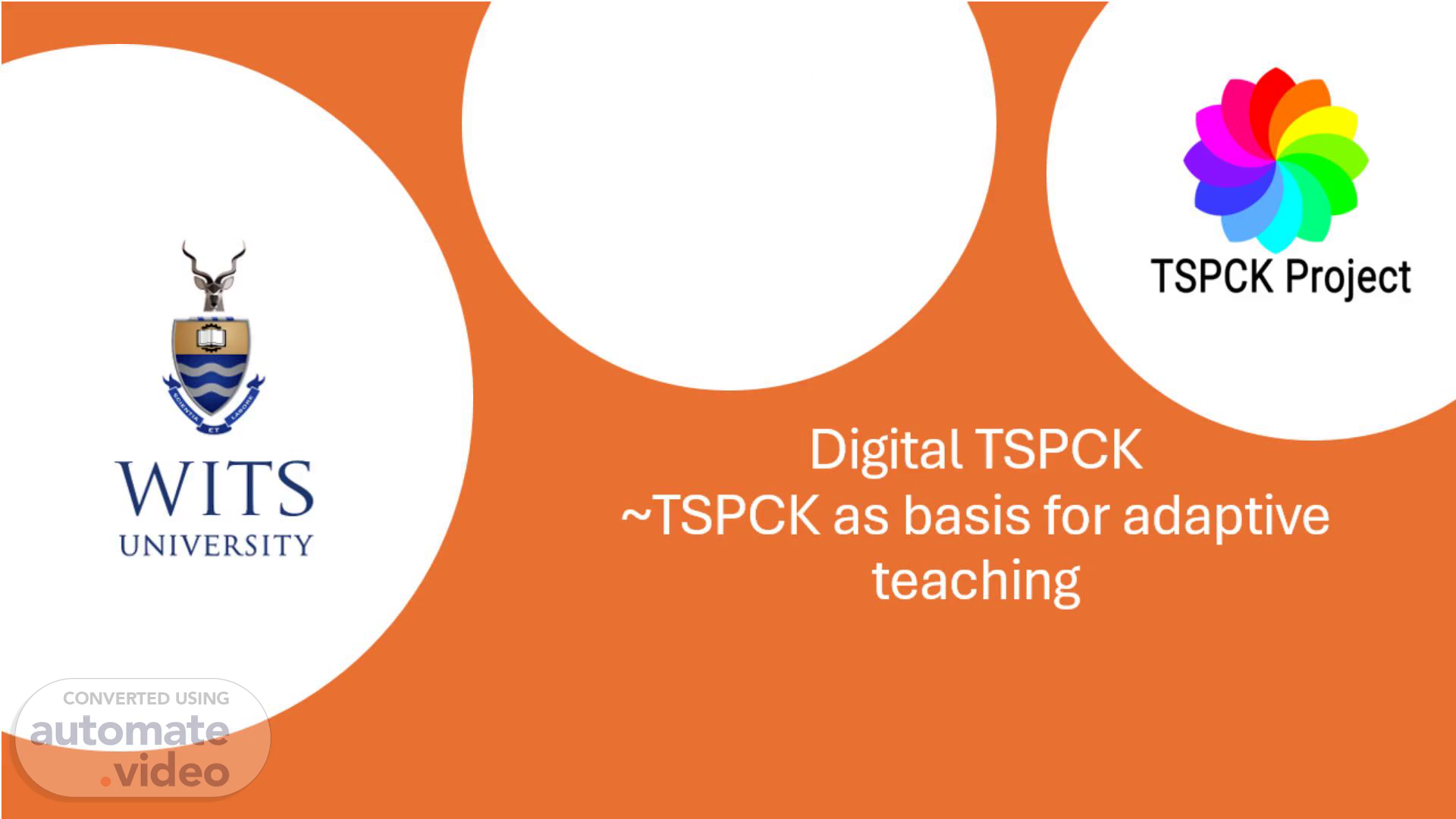Scene 1 (0s)
[Audio] Digital TSPCK ~TSPCK as basis for adaptive teaching Siphelele Gcwensa.
Scene 2 (13s)
[Audio] Recap Digital TSPCK UNESCO CTML TSPCK. Recap.
Scene 3 (20s)
[Audio] What is adaptive teaching? Earliest understanding of adaptive teaching is by Glaser (1972), who described it as individualizing teaching instructions to meet diverse learner needs. Corner (2008) articulated two types of adaptive teaching the Micro and Macro. Macro – large scale often for a group of learners Micro – Personalized adaptive teaching as per individual need in the classroom.
Scene 4 (57s)
[Audio] What is the relationship between TSPCK and Adaptive teaching?.
Scene 5 (1m 4s)
[Audio] Relationship between TSPCK and Adaptive teaching Belayneh (2025 ) articulated TSPCK to be a form of an adaptive pedagogy facilitating both teacher decision-making and student cognitive engagement. The major aim of TSPCK is to provide high quality explanations (Mavhunga & Rollnick, 2013). For quality explanations (TSPCK based) to be comprehended it is important that they are adaptable to either micro or macro scales as per classroom needs..
Scene 6 (1m 41s)
[Audio] Relationship between TSPCK and Adaptive teaching continues This evidence from TSPCK and learner achievement (Akinyemi & Mavhunga, 2021) As such adaptive teaching is a strategy that assist in delivering high quality explanations in a personalised manner..
Scene 7 (2m 0s)
[Audio] How does adaptive teaching work? Parsons et al. (2018).
Scene 8 (2m 16s)
[Audio] Adaptive teaching model Gallagher et al. (2022) simplified the above model as the mechanism of: Stimuli Reflection Response This mechanism should be in a continuous cycle until learner understanding is achieved..
Scene 9 (2m 33s)
[Audio] Stimuli Stimuli - is defined as external or internal object/event necessitating a specific reaction. Examples, include, learner confusion, learner questions and learner inability to answer teacher questions.
Scene 10 (2m 49s)
[Audio] Reflection Reflection – frame for processing the captured stimuli Example, teacher beliefs, knowledge (PCK/TSPCK) and experience.
Scene 11 (3m 2s)
[Audio] Response Response – is feedback to the processed stimuli. It involves the reply of how the teacher interpreted the received stimuli and it can either be accurate or require adaptation. Good response is associated with a well reasoned stimuli based on teacher professional knowledge. Examples, quality TSPCK led explanations.
Scene 12 (3m 26s)
[Audio] How do you think the components of adaptive teaching can be operationalised in the digital realm what must be considered? Stimuli Reflection Response.
Scene 13 (3m 38s)
[Audio] How can we move adaptive teaching into the digital? Digital Adaptive teaching Traditional Adaptive teaching Learner Learner Learner Teacher Learner Learner Learner Teacher Digital Content transformation Digital Assessments Learning analytics Adaptive instructions Content transformation Assessments Adaptive instructions.
Scene 14 (4m 24s)
[Audio] Class activity Design a PowerPoint slides on one Big idea from a topic of your choice. Think careful about how you will transform the topic to your learners (TSPCK components) Choose carefully the representations to use Consider the CTML principles for designing the digital content Consider the principles of adaptive teaching more especially Macro..
Scene 15 (4m 52s)
[Audio] . PGCE Physical Sciences and Life Sciences EDUC5187A and EDUC5184 TUTORIAL #06: Digital TSPCK Chosen topic: Date: 23 September 2025 With an intention to design a digital TSPCK based teaching video on the topic of either Photosynthesis or Electrochemistry. Use the digital adaptive teaching CoRe (video lesson plan) you did to design a 15-minute PowerPoint slides presentation on how you will deliver teaching content to your learners. Your PPT slides should focus on: i) ii) iii) One Big idea to be unpacked (3) The use of all TSPCK components and CTML principles in a complimentary manner reflecting high quality digital TSPCK. (12) Your slides should incorporate various PPT animations and transitions that adhere to the CTML principles. (5) [20 marks].
